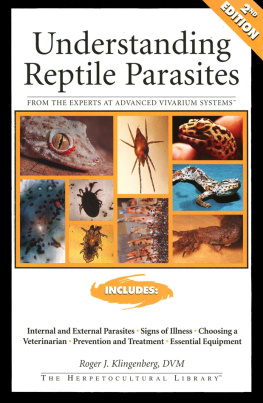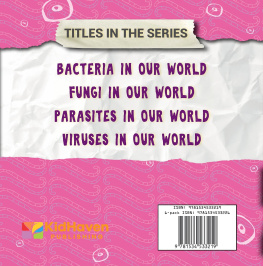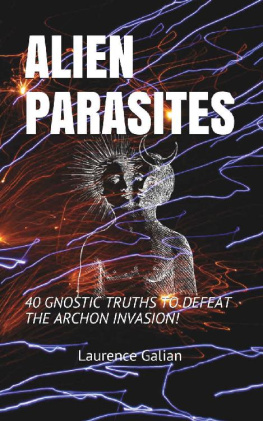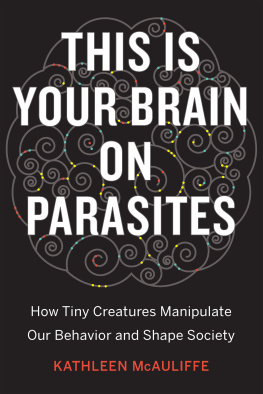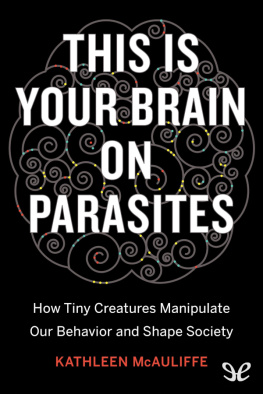Roger Klingenberg - Understanding Reptile Parasites
Here you can read online Roger Klingenberg - Understanding Reptile Parasites full text of the book (entire story) in english for free. Download pdf and epub, get meaning, cover and reviews about this ebook. year: 2012, publisher: CompanionHouse Books, genre: Romance novel. Description of the work, (preface) as well as reviews are available. Best literature library LitArk.com created for fans of good reading and offers a wide selection of genres:
Romance novel
Science fiction
Adventure
Detective
Science
History
Home and family
Prose
Art
Politics
Computer
Non-fiction
Religion
Business
Children
Humor
Choose a favorite category and find really read worthwhile books. Enjoy immersion in the world of imagination, feel the emotions of the characters or learn something new for yourself, make an fascinating discovery.
- Book:Understanding Reptile Parasites
- Author:
- Publisher:CompanionHouse Books
- Genre:
- Year:2012
- Rating:4 / 5
- Favourites:Add to favourites
- Your mark:
- 80
- 1
- 2
- 3
- 4
- 5
Understanding Reptile Parasites: summary, description and annotation
We offer to read an annotation, description, summary or preface (depends on what the author of the book "Understanding Reptile Parasites" wrote himself). If you haven't found the necessary information about the book — write in the comments, we will try to find it.
Understanding Reptile Parasites — read online for free the complete book (whole text) full work
Below is the text of the book, divided by pages. System saving the place of the last page read, allows you to conveniently read the book "Understanding Reptile Parasites" online for free, without having to search again every time where you left off. Put a bookmark, and you can go to the page where you finished reading at any time.
Font size:
Interval:
Bookmark:
Karla Austin, Business Operations Manager
Nick Clemente, Special Consultant
Barbara Kimmel, Managing Editor
Jessica Knott, Production Supervisor
Michael Capozzi, Designer
Cover and layout design concept by Michael Capozzi
Indexed by Melody Englund
Photographs by Roger J. Klingenberg, DVM
Copyright 2007 by Advanced Vivarium Systems
All rights reserved. No part of this book may be reproduced, stored in a retrieval system, or transmitted in any form or by any means, electronic, mechanical, photocopying, recording, or otherwise, without the prior written permission of Advanced Vivarium Systems, except for the inclusion of brief quotations in an acknowledged review.
LCCN: 96-183295
ISBN-13: 978-1-882770-90-8
eISBN-13: 978-1-620080-40-5

An Imprint of I-5 Press
A Division of I-5 Publishing, LLC
3 Burroughs
Irvine, California 92618
Printed and bound in Singapore
10 9 8 7 6 5 4 3 2 1
The author would like to thank his parents, Lila and Albert, for their supportallowing him to capture, drag home, and keep the countless numbers of insects, reptiles, and other critters that were so instrumental to his development. He would like to dedicate this book to his wife, Elaine, and children, Brad and Kate. His wife has also indulged him in his odd hobbies and pastimes, as well as both nurtured and tolerated the little boy in him. Brad and Kate have allowed him to relive the simple joy and excitement of discovering reptiles. Finally, the author would like to thank Philippe and Gigi deVosjoli for the opportunities they given him, as well as their unwavering friendship through the decades.
CONTENTS
PREFACE
T he reader should know that the author is, at best, an amateur parasitologist with a strong interest in reptiles. He salutes those professional parasitologists whose labors are tedious and taxing and seldom recognized. The first edition of this book was published in 1993, partly out of frustration that outside of some obscure chapters in wildlife texts there were no sources of information that compiled data on reptile parasites that anyone could easily access and use. It is this authors sincere wish that this text will help those who are interested in reptile parasites, answering many of their questions and concerns. The author apologizes to those professionals who are disappointed by the lack of taxonomy and complicated life cycles, but this book is meant to be user friendly.
In the thirteen years since the first edition, the author has watched and waited for an avalanche of similar works. It never happened, and so the decision was made to write a second edition. It bears emphasizing that once the decision is made to keep a reptile in captivity, we owe it to the animal to provide the best care possible.
INTRODUCTION
W hy are so many reptile deaths caused by parasitism? When the first edition of this book was released in 1993, the author discussed how commonly parasites were related to the mortality of reptiles that were necropsied and studied by pathologists (Ippen 1972; Griner 1983). It was certainly no surprise to reptile veterinarians that parasites were third on the list of causes of death, preceded only by bacterial infections (number two) and nutritional disorders (number one).
The relevant question is whether this has changed in the last thirteen years. Most reptile veterinarians believe that the overall death rate of reptiles maintained in captivity has declined due to vastly improved herpetocultural practices, expanding veterinary knowledge, and increased information on the natural history of the species being kept. However, the relative proportions of deaths, as noted in a 2005 survey of reptile diseases by Schmidt and Reavill, are still ranked in the same order: nutritional, bacterial, and parasitic. Why havent we been able to reduce the percentage of captive reptile deaths that are related to parasitism?
In the past thirteen years, much has changed in the way we treat parasites. Parasites are being diagnosed much more frequently for many reasons, and improved diagnostics mean more parasites are found to treat. Relative to other consumer goods, the cost of microscopes has decreased, and many veterinarians, labs, and individuals are working with much better equipment than they used in the past. In fact, its no longer cost-prohibitive for veterinarians and advanced hobbyists to use equipment that allows for the capture of a digital image of a parasite, which can then be e-mailed to a lab or experienced veterinarian for identification. In 1993, it was expensive and difficult to obtain good images even for publication purposes.
The reptile-owning public is better informed than in the past because more information is disseminated about reptile parasites and their treatment. Anyone can jump on the Internet and search for information on reptile parasites, gaining access to more material than they probably want or need.
Another factor in diagnosing more parasites is that reptile veterinarians and their in-house and commercial labs are better set up to perform more specific tests, such as acid-fast stains and serological tests, and the consumer is willing to pay more for this testing to occur. Reptiles now receive veterinary care previously reserved for dogs and cats.
Clearly, its a good thing that parasites are being diagnosed more frequently because you cant treat what you cant diagnose. However, if parasites are being diagnosed more frequently, why arent we controlling them better? Why havent we been able to reduce the percentage of reptile deaths related to parasitism?
In this book, the author will explain the reasons behind the continued high parasitism rate in reptiles and present some means by which breeders, consumers, and veterinarians can all work to correct the problems.
As was the case with the first edition, this book is intended to help the average herpetoculturist, amateur or professional, maintain parasite-free collections. It is not intended to be an extensive compilation of parasite taxonomy. The goals are twofold: One is to provide an understanding of, and the ability to apply, basic principles in the identification, diagnosis, and treatment of common reptilian parasites. The other goal is to convey an understanding of how captivity + stress + parasites = disease and how to avoid or treat disease.
Every author hopes that his or her work will be read in its entirety. However, it is human nature for readers to thumb through the text to try to locate the specific information they are seeking. Once readers are convinced that their reptiles need to be treated, their tendency is to jump right to the drug tables for drugs and dosages. The author highly suggests reading chapter 7 prior to using the drug tables. This is valuable information that should not be bypassed. Once a herpetoculturist accepts responsibility for treating reptiles for parasites, he or she needs to know more than just a quick dose. Chapter 7 concentrates on the historical and current uses of drugs and insecticides, how they work, and why they occasionally dont work. One should be familiar with side effects, risks, and contraindications before calculating doses and administering products.
The tables in chapter 3 are quick references for the use of the listed drugs and products. Not every drug that has been used to eliminate parasites in reptiles is listed or discussed. For the sake of brevity, the author has selected only those drugs that have proven to be safe and effective over the course of time.
Dont know how to administer the drug? Simply flip to chapter 8, where simple and successful methods are listed and illustrated. Chapters 10 and 11 are your resource guides for treating specific parasitic issues. This is where you can find detailed information on such topics as ridding your tortoise of pinworms, treating cryptosporidiosis (also called crypto) in your leopard gecko, and treating coccidia in your bearded dragon.
Next pageFont size:
Interval:
Bookmark:
Similar books «Understanding Reptile Parasites»
Look at similar books to Understanding Reptile Parasites. We have selected literature similar in name and meaning in the hope of providing readers with more options to find new, interesting, not yet read works.
Discussion, reviews of the book Understanding Reptile Parasites and just readers' own opinions. Leave your comments, write what you think about the work, its meaning or the main characters. Specify what exactly you liked and what you didn't like, and why you think so.

